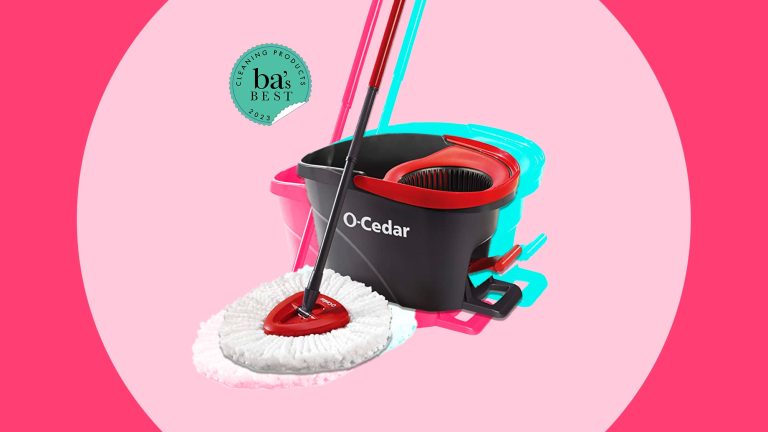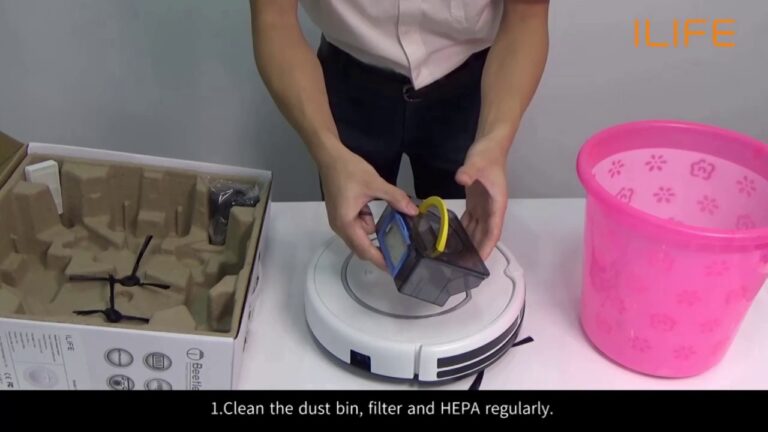How to Clean Stick Vacuum Filter | Quick & Easy Tips

To clean a stick vacuum filter, first remove it from the vacuum, then gently tap it to remove dust. Wash the filter with warm water if it’s washable, allowing it to dry completely before reinserting.
Stick vacuums have become household staples, sleek and handy for quick cleanups. Maintaining them is crucial for performance and longevity, particularly the care of their filters, as they trap dust and debris during use. Regular cleaning of the vacuum filter ensures effective operation and prevents motor damage due to clogging.
This not only extends the life of your vacuum but also improves the air quality in your home. Understanding the right way to clean your vacuum filter can save you time and money, keeping your stick vacuum running efficiently.
Introduction To Stick Vacuum Maintenance
Keeping your stick vacuum in top shape is key to its performance. Dirt and debris can clog your vacuum over time. This can make it less powerful. Cleaning the filter regularly is vital. It ensures your vacuum works well for a longer time.
The Importance Of Regular Filter Cleaning
Clean filters mean better suction and more dust picked up. They also keep the air in your home cleaner. A clogged filter makes your vacuum work harder. This can reduce its life. Experts suggest cleaning filters after each use. This keeps your stick vacuum running smoothly.
Types Of Filters In Stick Vacuums
Stick vacuums come with different filters. Some have foam filters that you can wash and reuse. Others use HEPA filters to trap tiny particles. These often need special care.
Table of Filter Types and Cleaning Methods
| Filter Type | Cleaning Method |
|---|---|
| Foam Filters | Rinse with water, let dry completely |
| HEPA Filters | Gently tap or use a soft brush. Replace as needed. |
:max_bytes(150000):strip_icc()/rsp-detail-tineco-pure-one-s11-tango-smart-stick-handheld-vacuum-at-tineco-hwortock-0015-8885297ca9724189a2124fd3ca15225a.jpg)
Credit: www.realsimple.com
Identifying When To Clean Your Filter
Maintaining a clean filter is crucial for your stick vacuum to function properly. Not sure when to clean your filter? Stay tuned as we discuss the tell-tale signs and recommended cleaning frequency to keep your vacuum running smoothly.
Signs Of A Dirty Filter
- Loss of suction: Your vacuum isn’t picking up as much dirt as before.
- Odd noises: Strange sounds come from your vacuum during use.
- Visible dirt: You can see dust and debris clogged up in the filter.
- Unpleasant smell: A musty or burnt odor emanates from the vacuum.
Recommended Cleaning Frequency
Keep your stick vacuum in top shape by cleaning the filter regularly. Follow these guidelines:
| Usage | Cleaning Frequency |
|---|---|
| Daily use | Once a week |
| Moderate use (2-3 times a week) | Every two weeks |
| Light use (once a week) | Once a month |
Tip: Always check your vacuum’s manual for specific advice regarding filter maintenance.
Preparation Steps Before Cleaning
Maintaining a stick vacuum includes cleaning its filter properly. Start the process correctly by preparing. This ensures a smooth, safe cleaning experience. Proper preparation extends the life of your vacuum.
Gathering Necessary Supplies
Having the right supplies on hand is vital. Here’s a checklist:
- Vacuum manual – to follow specific instructions
- Soft brush – for gentle cleaning
- Mild soap – if your filter is washable
- Warm water – for rinsing (if applicable)
- Microfiber cloth – for drying
- Air compressor or can of compressed air – if dry cleaning is needed
Safety Precautions To Consider
Before you start, keep these safety tips in mind:
- Unplug the vacuum – safety comes first!
- Consult the manual – for any specific safety guidelines.
- Avoid water near electrical components.
- Do not use harsh chemicals – they can damage the filter.
- Wear gloves – to protect your hands during cleaning.
Removing The Filter
Cleaning your stick vacuum extends its life and ensures peak performance. The heart of maintaining your vacuum lies in removing and cleaning the filter properly. For those unfamiliar with this essential task, here’s your easy guide to filter removal.
Step-by-step Filter Removal Process
- Power off your vacuum. Safety comes first.
- Locate the filter. Refer to your vacuum’s user manual for guidance.
- Gently release any latches or buttons that hold the filter in place.
- Carefully remove the filter. Use both hands to avoid dropping it.
- Check for secondary filters. Some models have more than one.
Tips For Avoiding Damage
- Avoid forceful pulling which may tear the filter.
- Do not use sharp objects to prise the filter out.
- Review your vacuum’s manual for specific removal instructions.
- Remember, a damaged filter requires replacement to avoid vacuum damage.
- Store spare filters correctly to prevent them from warping.
Cleaning The Filter: Dry Methods
Keeping your stick vacuum in tip-top shape includes taking care of its filter. A clean filter means better performance. Let’s look at dry methods to get this done—with no water required. These simple techniques can help maintain your vacuum’s efficiency and longevity.
Techniques For Brushing Off Dust
Brushing is a gentle, yet effective, way to remove dust from your stick vacuum filter. Follow these steps:
- Turn off and unplug the vacuum.
- Remove the filter based on the manufacturer’s instructions.
- Use a soft brush to gently sweep off dust from the filter.
Work outdoors or over a trash can to avoid a dust cloud.
Effective Use Of Compressed Air
Compressed air is another way to clear dust without moisture. Be cautious:
- Keep the nozzle a few inches away from the filter.
- Short bursts prevent damage to the filter fibers.
- Aim away from your face and others.
Outdoor cleaning is best to prevent dust dispersal inside your home.

Credit: www.walmart.com
Cleaning The Filter: Wet Methods
Cleaning the filter with wet methods ensures a thorough cleanse. Dirt and dust can clog a stick vacuum filter over time. This reduces the suction power of the vacuum. Keeping filters clean keeps the vacuum running efficiently. The following wet methods can help maintain a clean filter.
Rinsing With Water
Begin by removing the filter as per the manual’s instructions. Hold it under running tap water. Use cold water to prevent damage. The running water washes away loose dirt. For best results, allow water to flow through all sides of the filter. Gently tap the filter to shake off excess water. Remember to air-dry the filter completely before reinstallation.
Applying Gentle Cleaning Solutions
For tougher grime, use mild cleaning solutions. Mix water with a small amount of dishwashing liquid. Submerge the filter in the mixture. Avoid harsh chemicals as they might cause damage. Swirl the filter gently in the solution. Rinse thoroughly with clean water after soaking. Allow the filter to air-dry for at least 24 hours before placing it back. Clean filters improve air quality and vacuum performance.
Drying The Filter Post-cleaning
Cleaning your stick vacuum filter ensures peak performance. After washing the filter, drying it correctly is vital. Proper drying prevents mold and preserves the filter’s integrity. Let’s dive into how to dry your filter efficiently and safely.
Best Practices For Air-drying
Firstly, gently shake off excess water from the filter. Then, lay it on a clean, dry towel in a well-ventilated area. Avoid direct sunlight or heat sources, as gentle air-drying is key. Rotate the filter periodically to ensure even drying. This might take 24-48 hours, depending on the environment.
- Gently shake to remove excess water
- Place on a towel away from direct heat
- Rotate periodically for even drying
- Allow 24-48 hours to completely dry
What To Avoid During Drying
Never use a hairdryer or place the filter in a dryer. High heat can damage the filter fibers. Also, avoid squeezing or wringing out the filter, as this can deform it. Always check it’s fully dry before reinserting back into the vacuum to prevent damage.
- Avoid high heat sources like hairdryers
- Do not squeeze or wring out the filter
- Check the filter is completely dry before use
Reinstalling The Filter And Final Checks
Once your stick vacuum filter is clean and dry, it’s time to put it back where it belongs. This step is crucial; a filter that isn’t correctly installed could reduce your vacuum’s performance, or worse, damage the machine. Let’s walk through how to ensure a snug, secure fit and then test your vacuum to make sure it’s ready for action.
Ensuring Perfect Fit And Function
Reinstalling your filter correctly is the key to a well-functioning stick vacuum. Here are the steps for a perfect fit:
- Check the filter and housing for any damage or debris.
- Align the filter with the slot or holder precisely.
- Gently press the filter into place until it sits securely.
- Listen for a click or look for visual confirmation it’s locked in.
Check the manufacturer’s manual for any specific instructions related to your model. Take your time to get it right and avoid forcing the filter, as this could cause harm.
Post-cleaning Performance Testing
With the filter securely in place, it’s vital to test your vacuum’s performance. A simple test will do:
- Replace any other parts removed during cleaning, like the dustbin.
- Charge the vacuum or plug it in, if necessary.
- Turn on the vacuum and listen for normal sounds.
- Run the vacuum on a small, clean surface and check for suction.
Weak suction or strange noises might mean the filter isn’t sitting right or there’s still a blockage.
| Check | Expected Outcome |
|---|---|
| Sound | Consistent, without whistles or rattles |
| Suction | Strong on various surfaces |
| Filter Fit | No gaps, securely in place |
If everything checks out, your vacuum is ready to tackle dirt and dust with maximum efficiency once again.

Credit: dirtdevil.com
Frequently Asked Questions For How To Clean Stick Vacuum Filter
Can I Wash My Stick Vacuum Filter?
Yes, most stick vacuum filters are washable. It’s advised to gently rinse under cold water. Avoid using soap or vigorous scrubbing. Let the filter dry completely, usually for 24 hours, before reinserting it into the vacuum.
How Often Should I Clean My Vacuum Filter?
It’s best to clean your vacuum filter every month for optimal performance. If you vacuum more frequently or have pets, consider cleaning it every two weeks. Always check the manufacturer’s recommendation for your specific model.
What Are The Signs Of A Dirty Vacuum Filter?
A dirty vacuum filter may result in reduced suction power, strange noises, or unpleasant odors. If your vacuum isn’t performing as well as usual, it’s likely time to check and clean the filter.
Can A Dirty Filter Damage My Vacuum?
Yes, a dirty filter can overwork the motor, potentially leading to damages. It restricts airflow, causing the vacuum to work harder. This increased strain can shorten the vacuum’s lifespan.
Conclusion
Regular maintenance of your stick vacuum filter ensures peak performance. Embrace these steps for optimal cleanliness and prolonged appliance life. Remember, a clean filter means a clean home. So, take a moment to care for your vacuum and it will care for your space.




